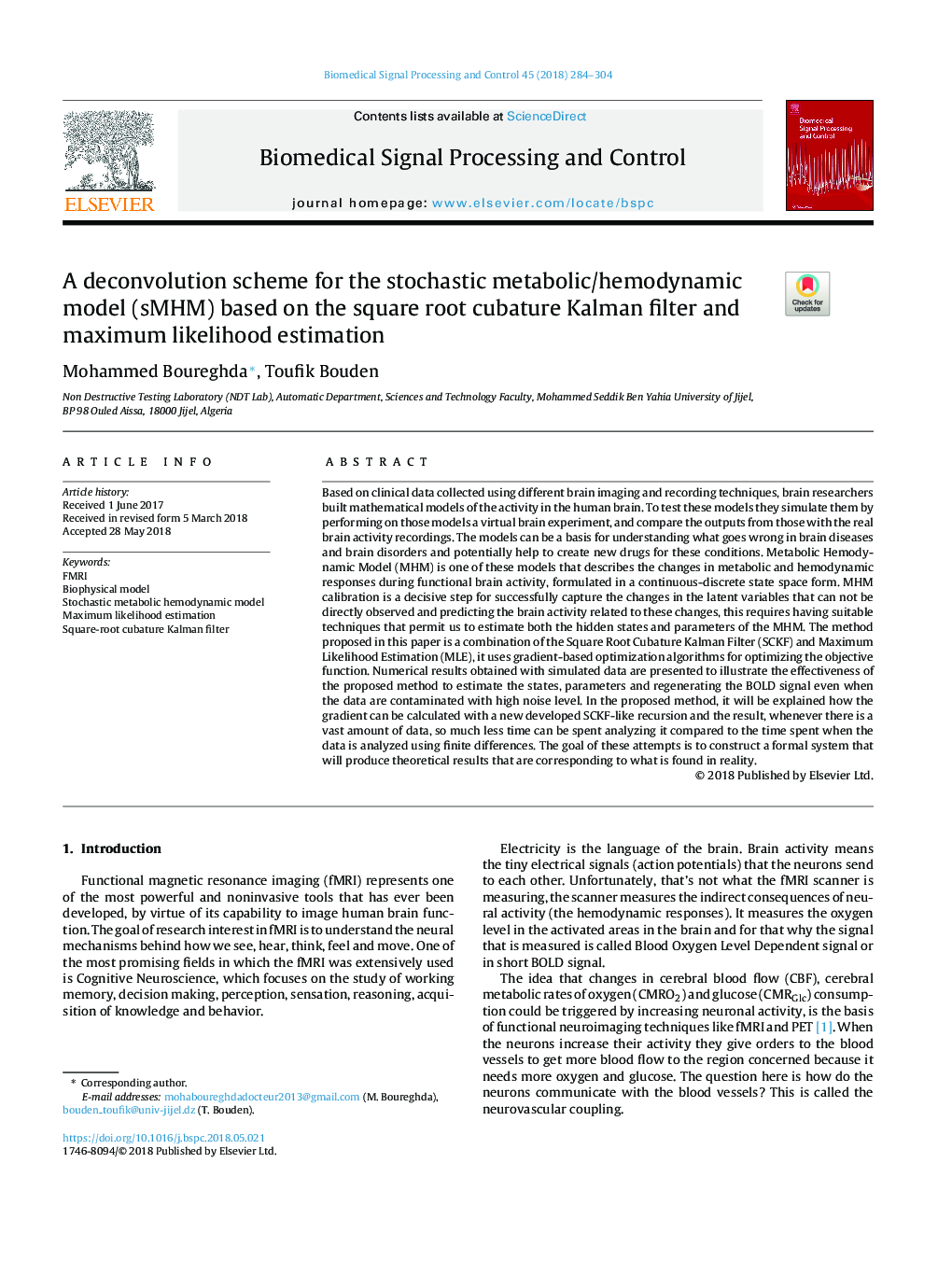| کد مقاله | کد نشریه | سال انتشار | مقاله انگلیسی | نسخه تمام متن |
|---|---|---|---|---|
| 6950744 | 1451635 | 2018 | 21 صفحه PDF | دانلود رایگان |
عنوان انگلیسی مقاله ISI
A deconvolution scheme for the stochastic metabolic/hemodynamic model (sMHM) based on the square root cubature Kalman filter and maximum likelihood estimation
دانلود مقاله + سفارش ترجمه
دانلود مقاله ISI انگلیسی
رایگان برای ایرانیان
کلمات کلیدی
موضوعات مرتبط
مهندسی و علوم پایه
مهندسی کامپیوتر
پردازش سیگنال
پیش نمایش صفحه اول مقاله

چکیده انگلیسی
Based on clinical data collected using different brain imaging and recording techniques, brain researchers built mathematical models of the activity in the human brain. To test these models they simulate them by performing on those models a virtual brain experiment, and compare the outputs from those with the real brain activity recordings. The models can be a basis for understanding what goes wrong in brain diseases and brain disorders and potentially help to create new drugs for these conditions. Metabolic Hemodynamic Model (MHM) is one of these models that describes the changes in metabolic and hemodynamic responses during functional brain activity, formulated in a continuous-discrete state space form. MHM calibration is a decisive step for successfully capture the changes in the latent variables that can not be directly observed and predicting the brain activity related to these changes, this requires having suitable techniques that permit us to estimate both the hidden states and parameters of the MHM. The method proposed in this paper is a combination of the Square Root Cubature Kalman Filter (SCKF) and Maximum Likelihood Estimation (MLE), it uses gradient-based optimization algorithms for optimizing the objective function. Numerical results obtained with simulated data are presented to illustrate the effectiveness of the proposed method to estimate the states, parameters and regenerating the BOLD signal even when the data are contaminated with high noise level. In the proposed method, it will be explained how the gradient can be calculated with a new developed SCKF-like recursion and the result, whenever there is a vast amount of data, so much less time can be spent analyzing it compared to the time spent when the data is analyzed using finite differences. The goal of these attempts is to construct a formal system that will produce theoretical results that are corresponding to what is found in reality.
ناشر
Database: Elsevier - ScienceDirect (ساینس دایرکت)
Journal: Biomedical Signal Processing and Control - Volume 45, August 2018, Pages 284-304
Journal: Biomedical Signal Processing and Control - Volume 45, August 2018, Pages 284-304
نویسندگان
Mohammed Boureghda, Toufik Bouden,